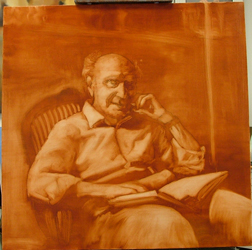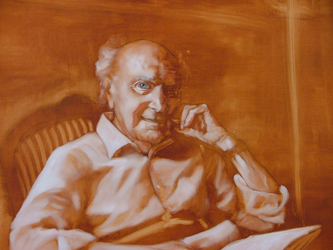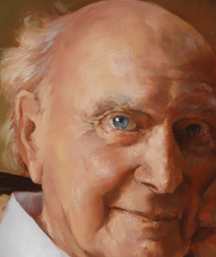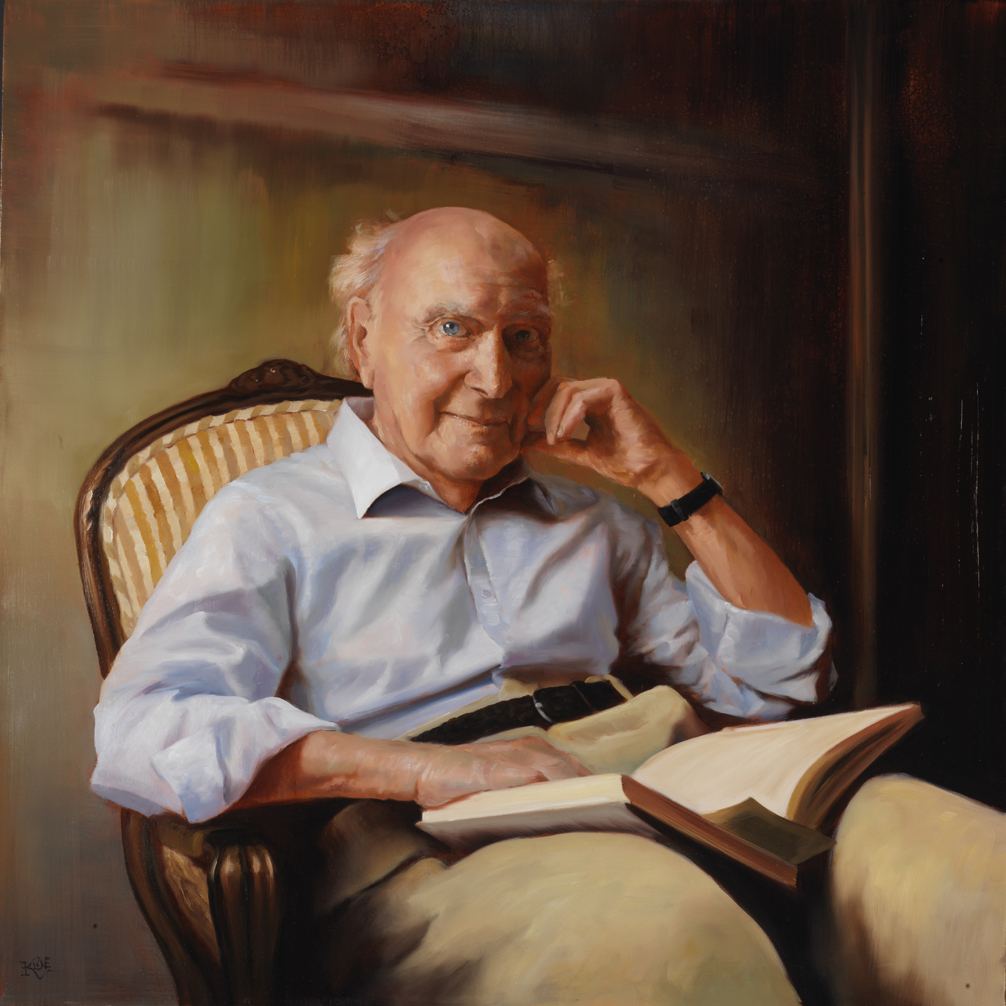A Note about photo set-up:
When I photographed him, I didn't like the impression of him being looked down upon so I adjusted my view to just below his eye level. Traditionally, commissioned portraits of royalty required the artist's eye level to be lower then their subject, today when an artist sets up a portrait, it depends on what you want to say about your subject and what would be the most flattering position.
Anatomy of a portrait:
 Step one: after the drawing, the canvas was covered in red oxide and then the images strongest lights and halftones where "subtracted" or wiped out with a cotton rag.
Step one: after the drawing, the canvas was covered in red oxide and then the images strongest lights and halftones where "subtracted" or wiped out with a cotton rag. Step two: The gray stage- the painting was reworked with a value study to describe the various values.
Step two: The gray stage- the painting was reworked with a value study to describe the various values. Step three: I got bored with my usual gray study and went right to color. I painted all night I was on such a high, blasting the salsa music to feed my frenzy. I found that I could actually use the "full spectrum painting" idea in this painting quite well. For instance - his shirt would be boring if I stuck to the usual blue tones throughout. In full spectrum painting, as long as you match the same value and temperature,
Step three: I got bored with my usual gray study and went right to color. I painted all night I was on such a high, blasting the salsa music to feed my frenzy. I found that I could actually use the "full spectrum painting" idea in this painting quite well. For instance - his shirt would be boring if I stuck to the usual blue tones throughout. In full spectrum painting, as long as you match the same value and temperature,you can put almost any color your want next to each other and it will make the painting more exciting and alive.
 The shirt has pinks, yellows, greens and violet tones, even though the overall coloring is blue those additional colors make it pop.
The shirt has pinks, yellows, greens and violet tones, even though the overall coloring is blue those additional colors make it pop.
I used the same idea on his head and for the final touches, the eyes, I had Dr. Wiengarten come in for a live sitting. I needed that glint in his eyes and that curl in his lip. You cannot substitute painting from life and even though most of this painting was done from a photograph, it would not have been successful without his live presence.

The final painting.
Most models, you have to urge them into some sort of thought or facial expression to get the blank look off of their face or that frozen fearful thought of "oh my God I'm in the spotlight now what do I do" ...but some models are a natural and Dr. Bill was a natural.
~Cheryl Kline


